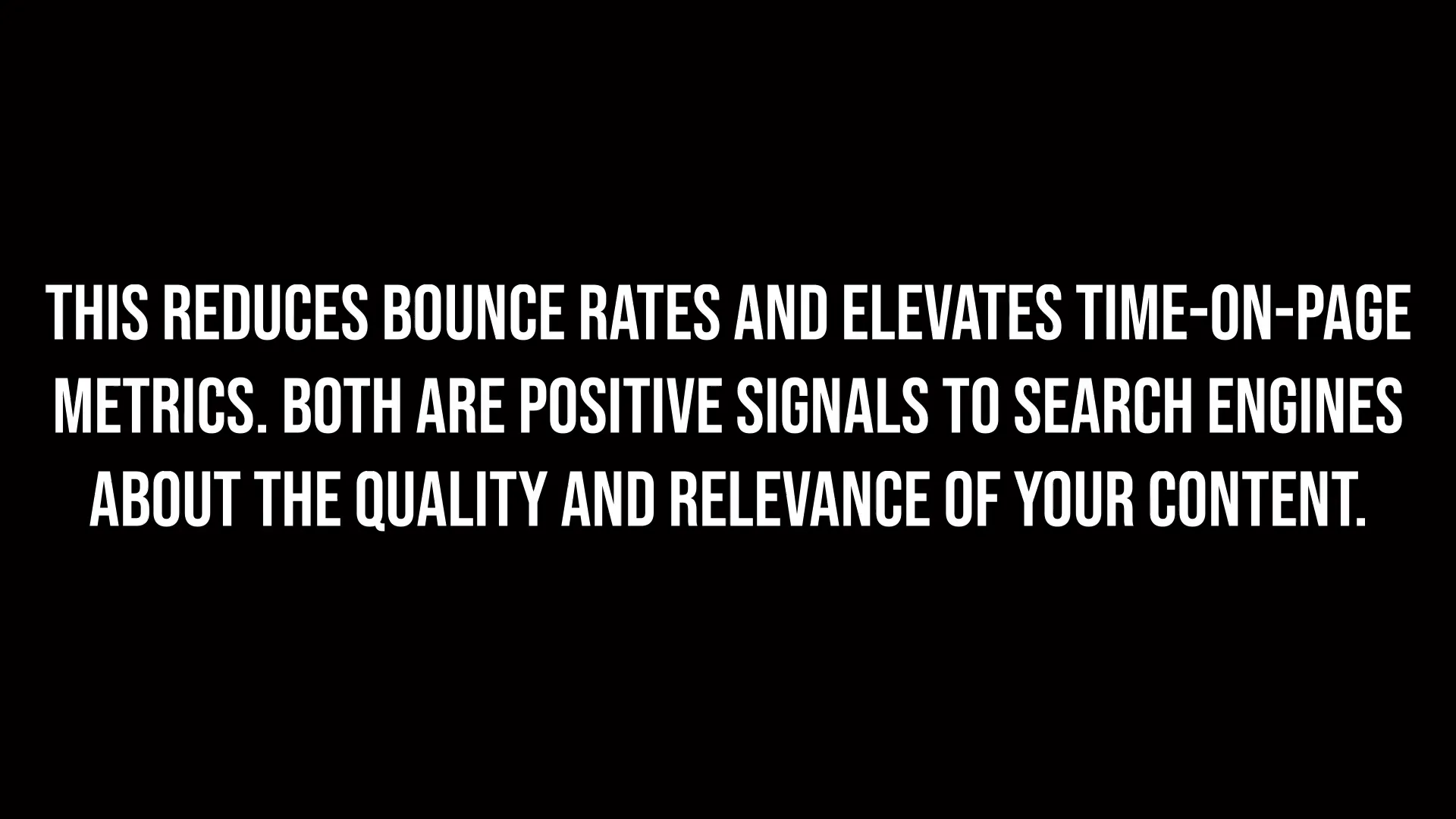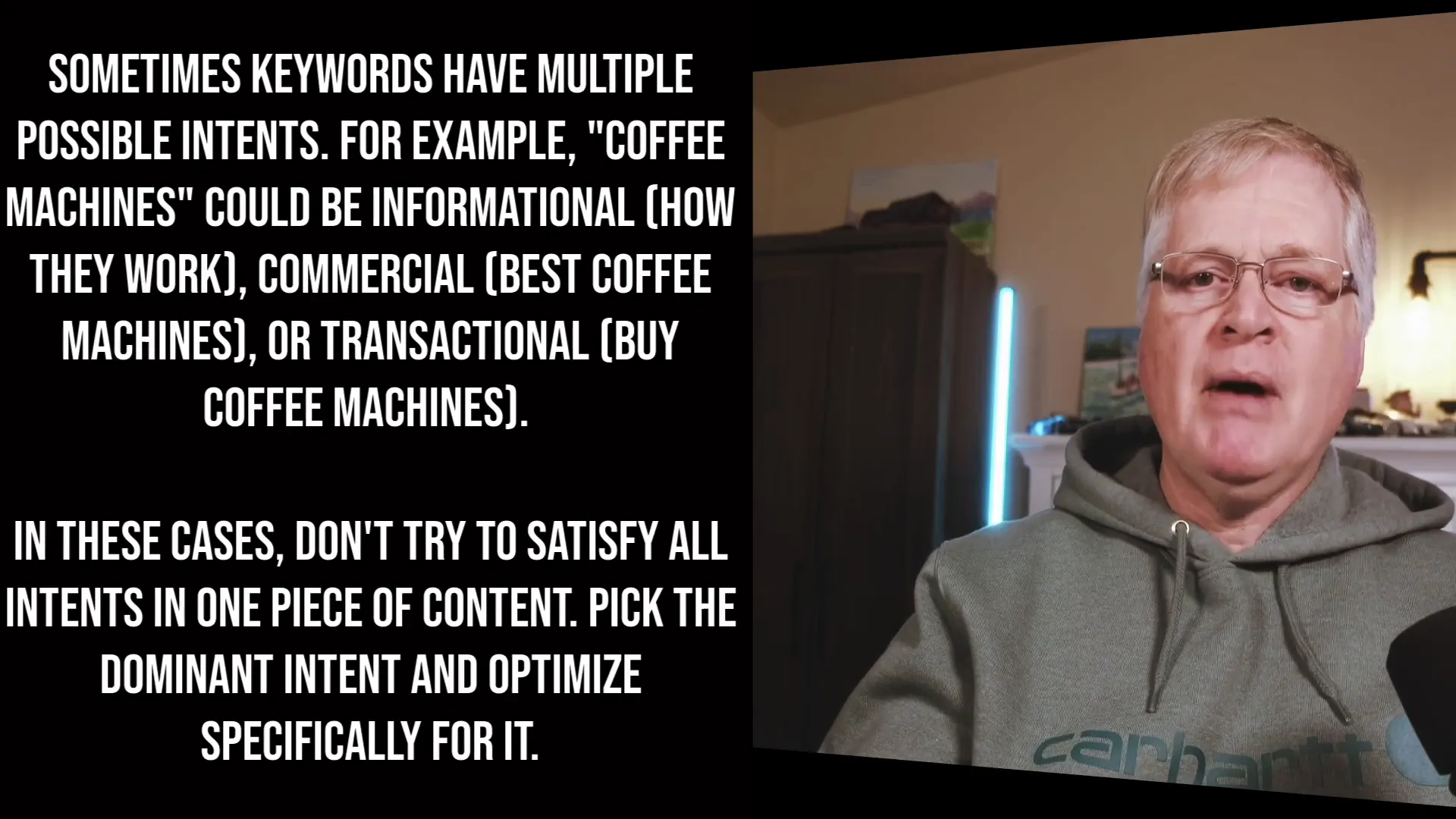Understanding Search Intent: The Key to Boosting Your SEO

So today I'm going to do a quick overview of search intent. I'll talk about what it is and why you should care. If you've been struggling with your Google rankings or your user engagement metrics are bad, this is information that can help you out. Understanding search intent will get you thinking differently about the way you craft your blog content as well.
Let's start with a real-world example. Imagine you're at a restaurant, and the waiter keeps bringing you appetizers when you've ordered dessert. That's pretty frustrating, right? And that's exactly what happens when your content doesn't match a user's search intent. You're serving the wrong thing to your audience.
So remember, search intent is the primary goal or purpose behind someone's search query. Think of it as the why behind every Google search. And here's the thing: Google has gotten incredibly good at understanding these intentions. If you can get your content to match the user search intent, it helps search engines recognize your page as highly relevant, which can lead to better rankings.

When your blog post directly addresses what users are looking for, search engines are more likely to show it in top positions. Obviously, there are other factors that can affect a page ranking, but creating content that matches search intent is something that you have control over. There's another big benefit to providing content that aligns with a user's search intent: you demonstrate more expertise, experience, authoritativeness, and trustworthiness, also known as EAT.
This can do two things: enhance your SEO performance and help you with domain authority. The great thing is that when your content meets users' expectations based on their search intent, they are more likely to stay on your page and engage with it. This is going to reduce your bounce rates and elevate your time on page metrics, both of which are positive signals to search engines about the quality and relevance of your content.

So, there are four main types of search intent, and I'm going to break each one down with examples.
Informational Intent
This is when people want to learn something. Searches like "how to tie a tie" or "what causes earthquakes" fall into this category. These searches typically start with a question like how, what, why, or when. For these searches, you'll notice Google tends to favor detailed guides, step-by-step tutorials, and comprehensive explanations.

Commercial Intent
This is when people are researching products or services but aren't quite ready to buy. Think searches like "best running shoes 2024" or "iPhone versus Samsung comparison." These searches often include words like "best," "top," "review," or "versus." Google typically shows comparison articles, review sites, and detailed product breakdowns for these queries.
Navigational Intent
This is when somebody's trying to find a specific website or page. For example, "Facebook login" or "Nike store near me." These searches usually include brand names or specific website names, and Google prioritizes official websites and local results for these queries.
Transactional Intent
This is when somebody's ready to make a purchase or complete an action. Searches like "buy MacBook Pro" or "book hotel in Paris" fall into this category. These searches often include words like "buy," "order," "purchase," or "download," and Google favors e-commerce pages and booking sites for these queries.

Now, here's where many website owners go wrong: they create content without first understanding the dominant intent behind the target keywords. Let me show you a real example that illustrates this.
Let's say you want to rank for "password manager." You might think writing a detailed article about how password managers work would be great content. But if you look at Google's first page results, what do you see? Mostly comparison pages and lists of the best password managers. That tells you the dominant intent is commercial; people want to compare options before choosing one.

How to Figure Out Search Intent
So how do you figure out search intent for your keywords? Here's a process you can follow:
- Analyze the SERPs (Search Engine Results Pages). Look at what is currently ranking. Are they mostly how-to guides, product pages, or comparison articles? This gives you immediate insight into what Google thinks users want.
- Check out the AI overview. Determine if the information being shared is informational, commercial, transactional, or navigational.
- Look at the featured snippets. If Google displays a featured snippet, pay attention to its format. Is it a definition, a list, or a table? This tells you what information format works best.
- Check the "People Also Ask" boxes. These questions give you additional insight into what users want to know about your topic.
- Examine search features. Does Google show shopping results, local businesses, or images? These features provide clues about user intent.

Here's a pro tip that most people miss: sometimes, keywords have multiple possible intents. For example, "coffee machines" could be informational (how they work), commercial (the best ones to buy), or transactional (where to buy coffee machines). In these cases, don't try to satisfy all intents in one piece of content. Pick the dominant intent and optimize specifically for it.
The impact of matching search intent can be pretty dramatic. I've seen pages increase their rankings just by better aligning content with user search intent. Google's primary search goal is to try and closely satisfy a user search intent. You could have great technical SEO and backlinks, but if your content doesn't match what users want, you could be adversely affecting your rankings.

Actionable Tips
So before we wrap up, let me give you some actionable tips:
- Always check the SERP before creating content.
- Pay attention to the content format that's ranking.
- Look for patterns in the titles and meta descriptions, and match your content structure to top-ranking pages.
- Monitor your rankings and adjust if needed.
- Remember, SEO just isn't about keywords anymore; it's about understanding and delivering what your audience actually wants.
If you found this helpful, make sure to hit that like button and subscribe for more tips. So until next time, keep optimizing!



